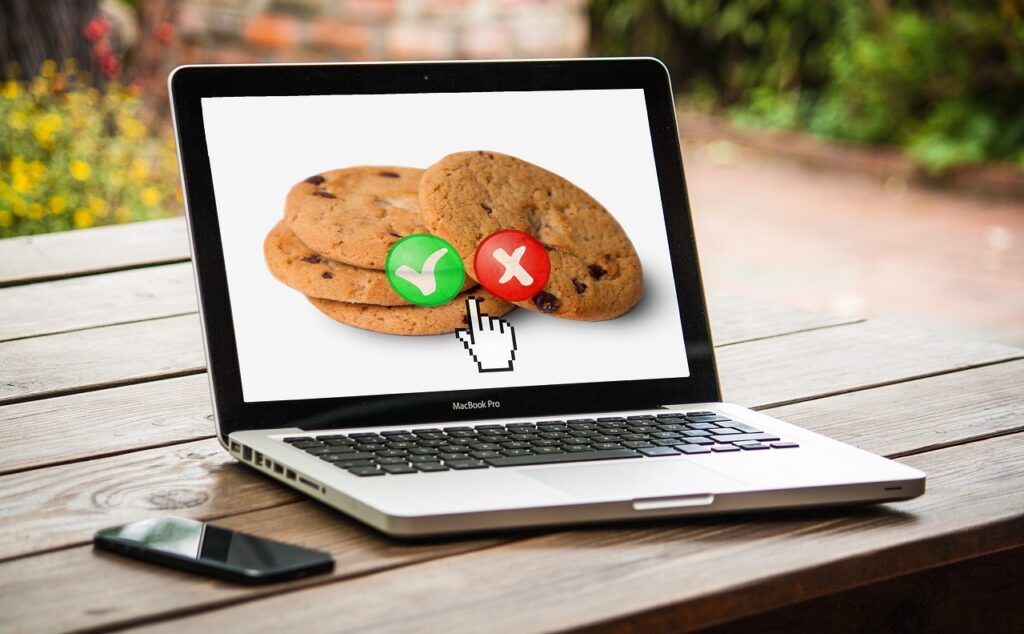When cookies were first created in 1994, marketers thought they were delicious. These simple yet powerful tools revolutionized digital marketing overnight, making it into the booming multi-billion-dollar industry we know today. Even with all that success, however, nothing stays hot and fresh forever. Recently, as personal privacy concerns have grown – the decision was made to throw cookies in the trash. As a marketer or business owner, it would be wise to start planning your next steps for what is to come without third party cookies. In this blog post, we’ll discuss what third party cookies do, when they’re going away forever, and what you can do to stay ahead of the upcoming changes.
What are Website Cookies and How Do They Work?
Cookies, also known as HTTP cookies, website cookies, or internet cookies, are small pieces of data stored in your web browser. They allow a website to keep information about you when you visit it, including remembering log-in info, items in your shopping cart, things you expressed interests in, and even which other websites you’ve visited. Cookies are the main reason you get served retargeting ads after visiting a website, and also why you don’t need to remember your Amazon password every time you log in. There are two major types – first party cookies and third party cookies.
First Party Cookies
These are created by the website’s publisher and only that domain can access the information stored. Users have the ability to block websites from storing cookie data about them, and can manually delete this data themselves. These cookies are virtually harmless to personal privacy and will remain after third party cookies have been removed.
Third Party Cookies
These are the ones that are going away. Third party cookies get their name from the fact that they are created by third party servers. This means that the information is not only collected by the website for the sake of enhancing user experiences, but can be viewed by marketers. Anyone that loads the third party server code can access private data about consumers. While users can delete these cookies manually, most were previously unaware that they even existed.
What is Happening to Website Cookies and Why?
Recently, website cookies have come under increased scrutiny due to privacy concerns. As more users become aware of the data being collected about them online, they are becoming increasingly concerned with how this data is used. And frankly, they should be. Unlike first party cookies, third party cookies can be distributed and sold to the highest bidder – anywhere in the world – for profit. While this is great for marketers, it sounds more like a terrifying episode of Netflix’s Black Mirror to consumers.
In response to this public dissatisfaction, the Europe Union (EU) enacted the General Data Protection Regulations (GDPR), requiring websites to inform users of what information is being collected and how it will be used. It also requires websites to offer users the ability to opt out of having their data collected, or completely opt out of cookies altogether. Because this law is extra-territorial in scope, it has also affected the US and the world at large. This is why you’ve been seeing “cookie consent” notifications when visiting a new website. These usually have two parts – a disclaimer telling you that the site uses “essential” or first party cookies – and a consent request for third party cookies. If you accept, you are allowing that site to collect information about you for marketing purposes.
When Are Third Party Cookies Going Away?
Some browsers have already started blocking third party tracking cookies by default, meaning marketers will no longer be able to track user behaviors across different websites with these types of cookies. This change, expected to take effect for Google Chrome in early 2022, was pushed back to 2023 – and is now expected to be finalized by 2024. The date may not be certain, but one thing is: if the invention of cookies by Lou Montulli was a disruptor for digital marketing, their removal will be too.
How We Should Prepare for a World Without Third Party Cookies
To prepare for this shift from third party cookies and cookie-based tracking, marketers should start
exploring alternative methods of gathering customer data. These include first-party data collection techniques such as:
- Incentivizing surveys and polls
- Using anonymized IP Addresses instead of cookies
- Leveraging contextual targeting such as AI and machine learning algorithms that don’t rely on personally identifiable information (PII)
Additionally, marketers should start thinking about other ways to reach their target audiences outside of online channels, such as offline campaigns or events.
One such idea is retargeting without the use of third party cookies. To do so, one can create a landing page specifically for their own – or a client’s ad campaign – using first party cookies to collect consumer data on that page. Because traffic to this page should be consumers with an interest in the products or services offered, the insights gathered will be very useful for retargeting those qualified leads.
How Strategic Marketing Can Help
For more than 30 years, Strategic Marketing has weathered several market disruptors, taken advantage of technological advancements, and even pulled through during the recent pandemic. Not only can we do it all, through it all – we’ve helped our clients to thrive during these hard times as well. When it comes to providing innovative solutions to business-breaking problems – Strategic Marketing has the proprietary tech, decades of expertise, and professional staff to get the job done.
If you’re looking for a full-service agency to help bake up a solution to the end of third party cookies, contact us before it’s too late.



















